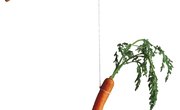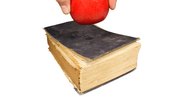What is Behaviorism?
You can find countless ways to apply behaviorism theory in the classroom to elicit and maintain desired student behavior. Examples of behavior modification techniques include praise, reward systems, continual feedback, positive reinforcement and non-punitive discipline. Behaviorism is no less relevant today than when introduced to schools in the 1950s by B.F. Skinner, Ivan Pavlov, Edward Thorndike, and John B Watson. According to Skinner, the lead behaviorist, observable behavior is a learned response reinforced by the consequences resulting from that behavior. For instance, if students are rewarded for doing extra work, they're more likely to repeat that behavior in this theory of learning.
Behaviorism is often used in classroom management in many ways, like in learning theory, learning processes, negative reinforcement, operant conditioning, classical conditioning, constructivism, stimulus-response, social learning theory and other behavior learning theory practices, for teaching strategies. The Theory of Behaviorism also utilizes different types of reinforcement strategies, like time-outs as a positive incentive and other undesirable behavior methods as a negative. Behaviorism can also be considered an educational psychology when used in the classroom setting as students deal with the repercussions of their actions towards others and are matched with cognitivism strategies as punishments for classroom behavior.
Incorporate Behaviorism into Course Design
The Office for Teaching and Learning and Wayne State University suggest that using weighted grades for homework assignments, exams and class participation is an effective application of behaviorism. If you assign more points for some activities than others, students are reinforced for putting their efforts into the correct priorities. For example, students would know that you consider it more important to do well on a group project worth 40 percent of their grade than on quizzes worth 10 percent of their grade. Students who budget their time accordingly would likely attain a higher grade. Additionally, you should give students ongoing feedback to point out what they’re doing well and where they need improvement.
Implement a Classroom Reward System
You may want to implement a behaviorism learning theory called a token economy. Students are told how to earn a token, such as listening, staying on task and raising their hand. Depending on the child's age, tokens can be stars, stickers or a a punch card. When tokens accumulate, students may exchange tokens for a reward that the student chooses. For instance, a token economy reportedly improved school climate at Stanfield Elementary in Oregon. When students are observed doing good deeds, teachers give students a “GOTCHA” ticket that can be exchanged for prizes. The Vanderbilt Kennedy Center notes that the token system can also be effective with students with autism spectrum disorder.
Team Up With Other Teachers for Support
You may find it helpful to collaborate with other teachers interested in using behaviorist theory to improve student performance and behavior. Many schools rely on a behavioral framework known as Positive Behavioral Intervention and Supports to shape appropriate behaviors in classrooms and learning environments like those used for extracurricular activities. Teachers target up to five behaviors to reinforce throughout the curriculum. A PBIS approach emphasizes positive reinforcement rather than harsh discipline, such as out-of-school suspension, which is strongly discouraged by the U.S. Department of Education. Key components of PBIS include clear communication of rules, regular routines, consistent reinforcement of targeted behaviors, social skills training and natural consequences, such as temporary loss of privileges.
Apply Behaviorism to Classroom Teaching and Discipline
You can use behaviorism to increase learning and good behavior and decrease distracting student behavior. When writing lesson plans, identify what knowledge and skills you want students to master. Determine how you'll objectively evaluate performance. Develop a system for tracking student progress, and intervene if problems arise. Communicate to students your academic and behavioral expectations. Use exams and grades to encourage students to do their best work.
For instance, if you suspect students aren't completing assigned readings, you could start giving quizzes to motivate students and reward those who work hard. To control disruptive behavior that can affect teaching and learning, praise positive behavior, ignore mildly irritating behavior and consistently enforce consequences for breaking rules. Behaviorism acts on a positive to negative spectrum and can be used in many ways to meet the needs of the learners and their actions for desired behaviors as a result.
Related Articles
References
- Psychology; Don H. Hockenbury and Sandra E. Hockenbury
- A History of Psychology in Metascientific Perspective; K.B. Madsen
- Wayne State University: The Office for Teaching and Learning Newsletter: From Theory to Practice: Behaviorist Principles of Learning and Instruction
- Stanfield Elementary School: GOTCHA!
- Positive Behavioral Intervention and Supports: Primary Level
- U.S. Department of Education: Guiding Principles A Resource Guide for Improving School Climate and Discipline
Writer Bio
Dr. Mary Dowd is a dean of students whose job includes student conduct, leading the behavioral consultation team, crisis response, retention and the working with the veterans resource center. She enjoys helping parents and students solve problems through advising, teaching and writing online articles that appear on many sites. Dr. Dowd also contributes to scholarly books and journal articles.










